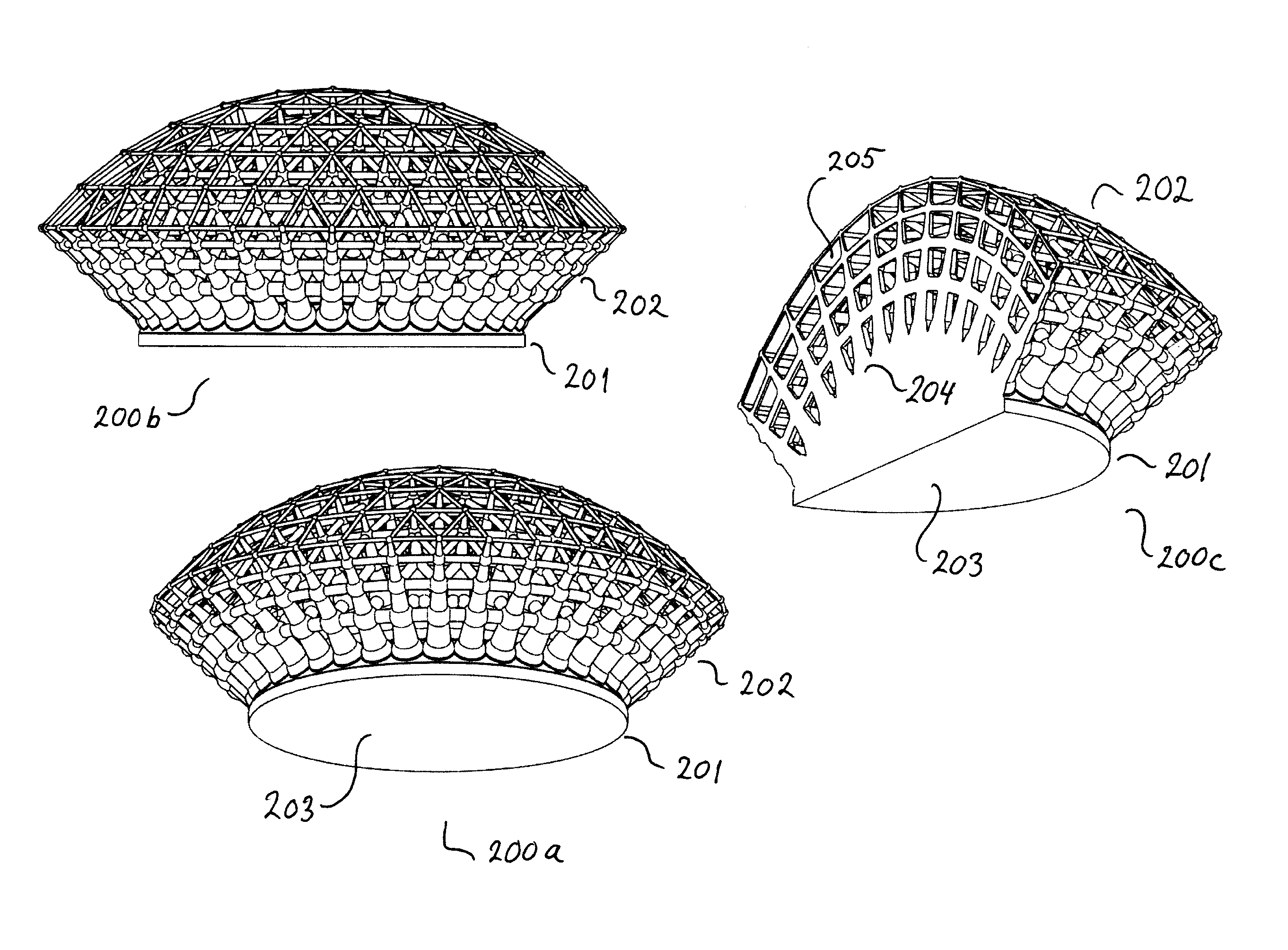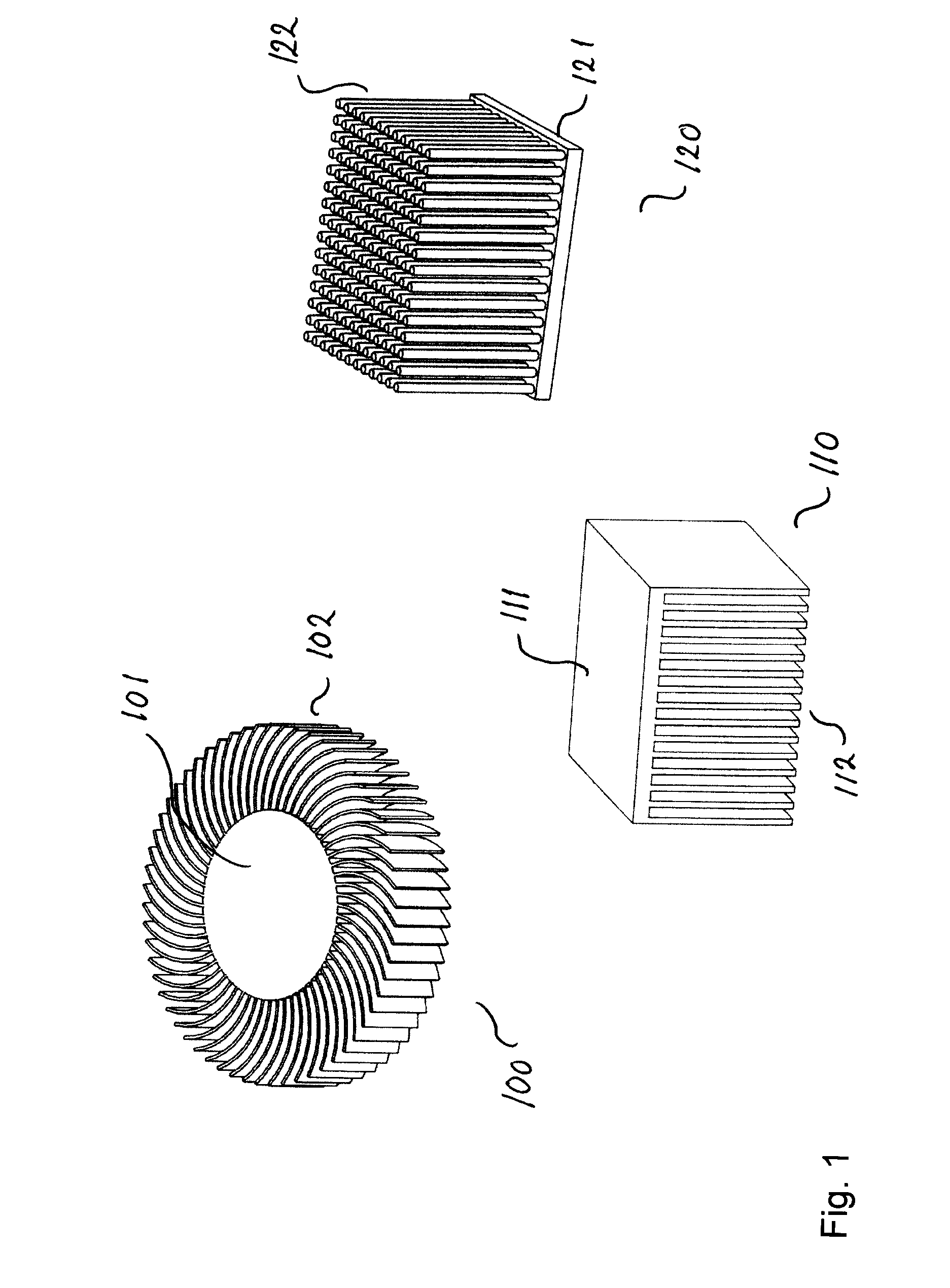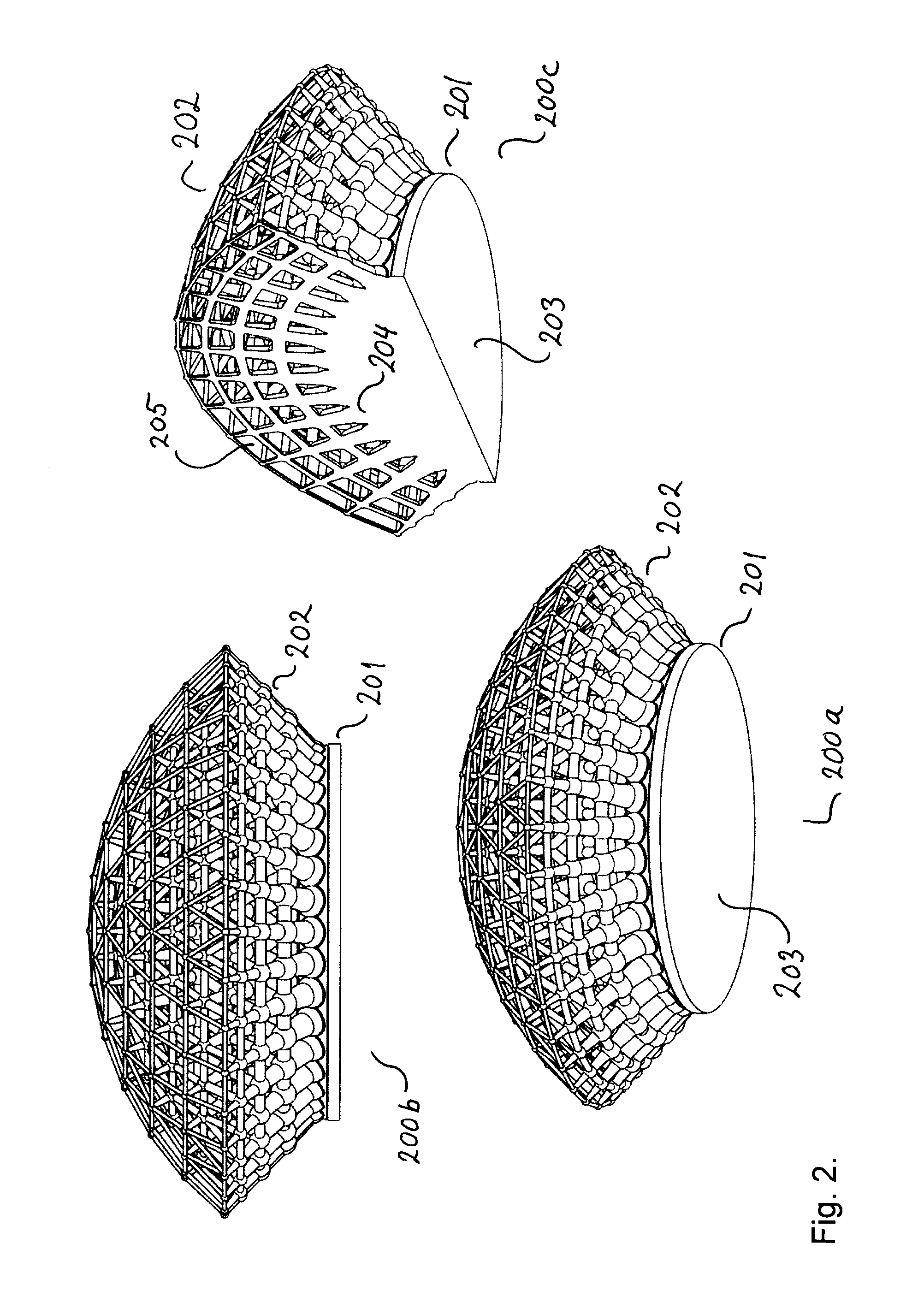Heat Sink Having a Cooling Structure with Decreasing Structure Density
a cooling structure and cooling structure technology, applied in the field of heat sinks, can solve the problems of increasing the cost of heat sinks, preventing the fabrication of more complex heatsink designs, and requiring more complex structures to improve the performance of heat sinks, so as to increase the distance to said center axis.
- Summary
- Abstract
- Description
- Claims
- Application Information
AI Technical Summary
Benefits of technology
Problems solved by technology
Method used
Image
Examples
Embodiment Construction
[0059]FIG. 1 illustrates three prior art heat sinks 100, 110, and 120. The first heat sink 100 has a base or core 101 and curved cooling fins 102 connected to the core 101. The fins 102 all have the same curve, and the material thickness of the fins 102 is equal all the way. The heat sink 110 also has a base or core 111 and straight formed fins 112 connected to the core 111, with the material thickness of the fins 112 being equal all the way along the fins 112. The heat sink 120 also has a base or core 121 and pin formed fins 122 connected to the core 121, with the material thickness of the fins 122 being equal all the way along the fins 122. The heat sinks 100, 110, and 120 are representative of the class of heat sinks formed by conventional methods including extrusion, machining and die-casting.
[0060]FIG. 2 illustrates a first embodiment of a heat sink 200 according to the present invention, which heat sink 200 may be formed using a 3-D printing and casting process, such as the se...
PUM
| Property | Measurement | Unit |
|---|---|---|
| Diameter | aaaaa | aaaaa |
| Thickness | aaaaa | aaaaa |
| Structure | aaaaa | aaaaa |
Abstract
Description
Claims
Application Information
 Login to View More
Login to View More - R&D
- Intellectual Property
- Life Sciences
- Materials
- Tech Scout
- Unparalleled Data Quality
- Higher Quality Content
- 60% Fewer Hallucinations
Browse by: Latest US Patents, China's latest patents, Technical Efficacy Thesaurus, Application Domain, Technology Topic, Popular Technical Reports.
© 2025 PatSnap. All rights reserved.Legal|Privacy policy|Modern Slavery Act Transparency Statement|Sitemap|About US| Contact US: help@patsnap.com



